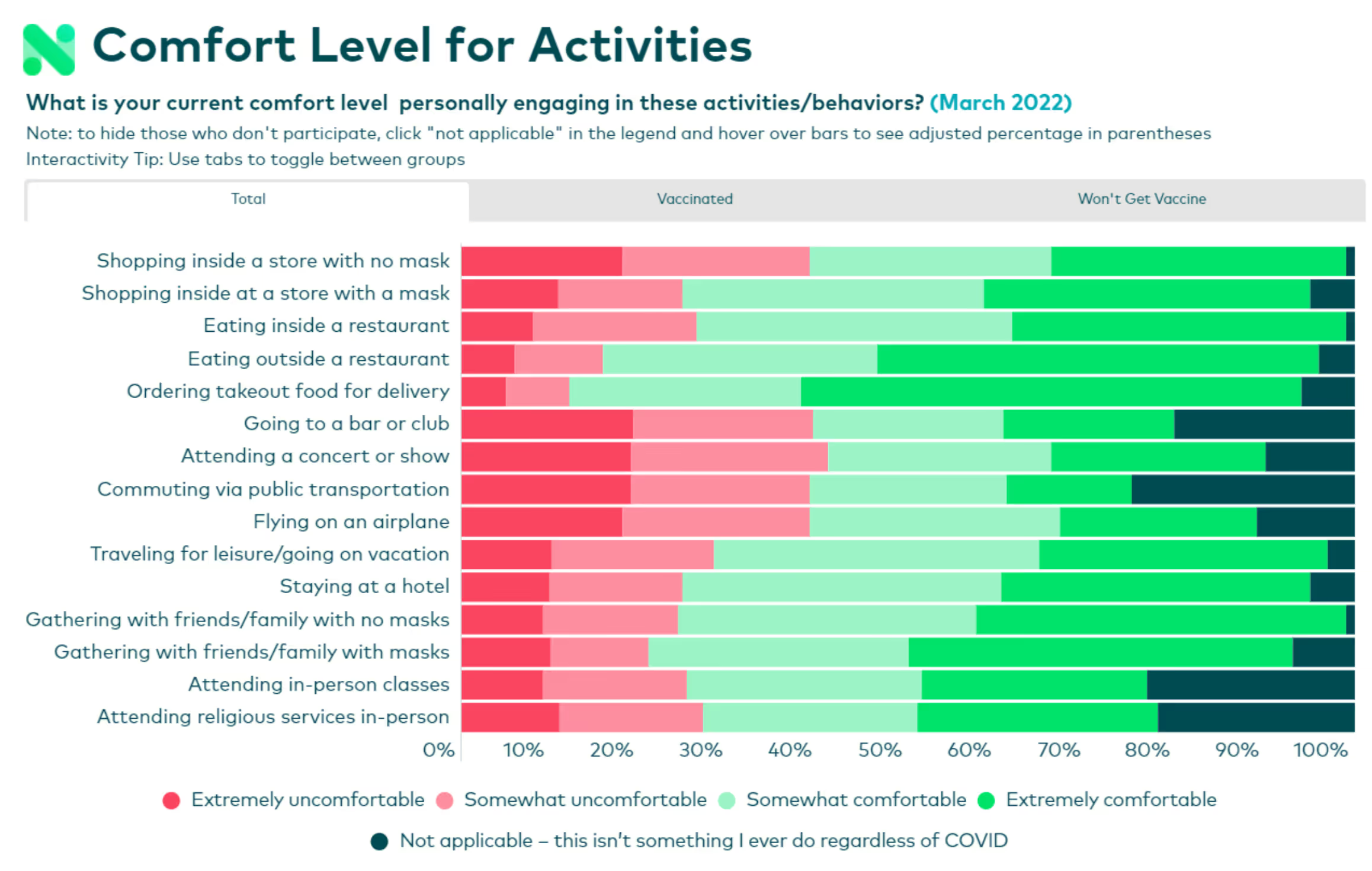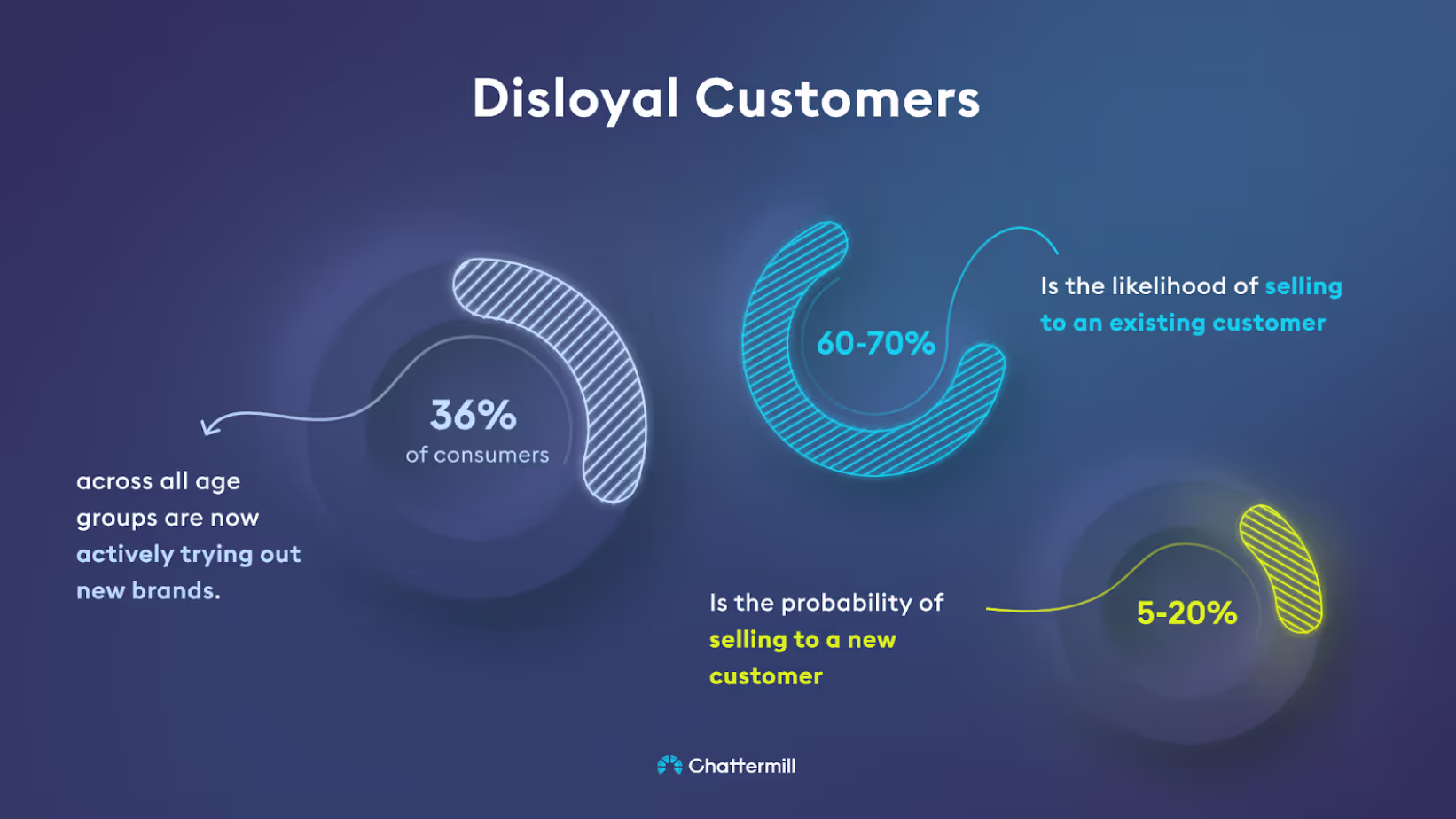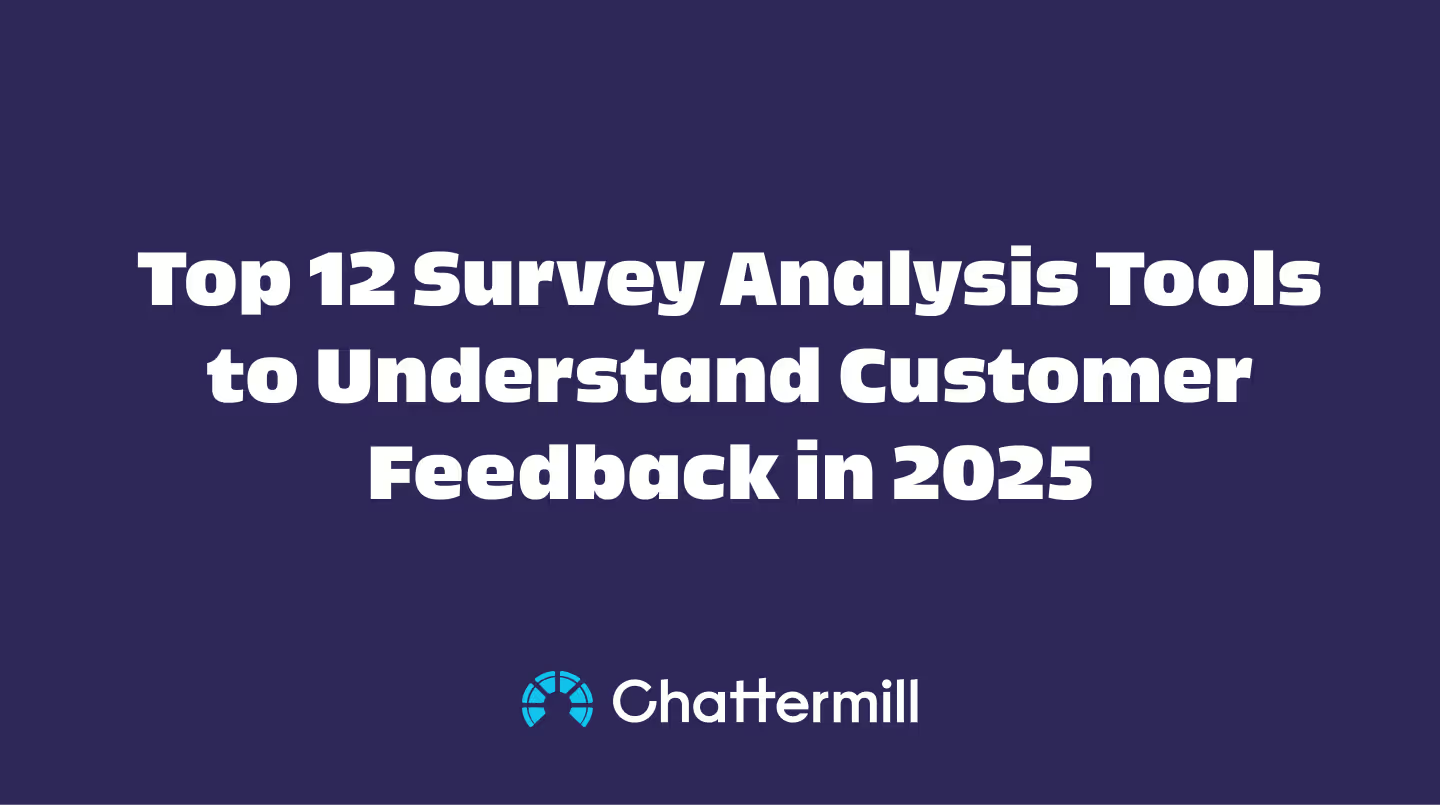It’s an uncertain time for omnichannel retailers around the world. While the Coronavirus pandemic brought massive disruption to the sector, many regions now see footfall return to the high street and welcome a cohort of consumers with new priorities.
These include cleaner and safer stores, increased personalisation, more payment and fulfilment options, and an offline experience that’s more joined-up with the digital one they have come to depend on through the worst of Covid-19.
So how do we optimise in-store retail performance?
The short answer is: Data.
The slightly longer answer is: data that we can make sense of.
Where Chattermill Comes In
In the first place, we need to be able to capture data in all the right places – online and offline. I’m sure most of you are already doing this through feedback, customer conversations, in-store surveys, and customer support.
Beyond that, we need to be able to bring all of this data together – from hard numbers to customer sentiment. For this, we need a technology that can unify all of the customer data you collect.
Then, we need to process it – using AI, so this is more feasible at scale, so you have trustable data to work from, and so we can remove any bias.
Both are essential for retail brands.
And finally, and perhaps most importantly, we need meaningful intelligence that we can then build into our strategies for improving CX, increasing loyalty and retention, and driving growth.
Put together, we call this Unified Customer Intelligence.

Putting Things Into Context – The Importance Of Tracking And Improving In-Store Retail Performance In 2022
It’s no secret that consumer habits have changed in the past couple of years. So do brick-and-mortar stores still have a place in the customer experience mix?
UK-based research from Gekko suggests they do. In a survey conducted in April 2021, 87% of consumers said they’d returned to physical stores at least once in the two weeks after retailers had opened up stores again. The research also found that 80% of people who had returned to stores felt retailers “were doing enough to make them feel safe.”
In the US, consumers express similar sentiments.

According to data from Numerator, in March 2022, 71% of respondents said they were comfortable shopping at a store with a mask. And despite one in three consumers admitting they’re still “highly concerned” about Covid, 60% of consumers said they were comfortable with visiting a store without a mask. High street retailers are back.
Customer Experience Is Key
This data is clearly good news for retailers with a physical presence, but it’s not enough to simply throw open the doors and provide hand sanitiser on entry. Customers have changed.
Consumers are less loyal now than they were before Coronavirus. They still need an in-store option, but it has to be an experience. One that’s seamless across digital and offline. And one that’s highly personalised.
Optimising in-store experiences can, of course, help generate sales there and then. But it can also drive traffic to your website, help increase your digital footprint, and improve the likelihood that a customer might complete a purchase with you online after browsing in-store.
Even if a shopper is not looking to buy in-store today or as soon as they get home, understanding how we can better transition an in-store visitor onto your digital journey is crucial to building brand loyalty and getting the best value from your bricks and mortar presence.
How Chattermill Helps You Understand In-Store Performance
Analysing in-store customer behaviour is nothing new. But the capabilities we have today go well beyond average transaction values and conversion rates.
Traditionally, retailers would only have access to static data: X amount of customers buy X items at X times. Here at Chattermill, we are more interested in living data. Trends observed in real-time can then be paired with your static data to create a more comprehensive and timely understanding of how customers in your stores are behaving.
Solid customer feedback is essential here – whether it’s from post-purchase surveys emailed to customers or verbal feedback recorded by in-store staff. Chattermill’s Unified Customer Intelligence platform can process and analyse this unstructured free-text feedback at scale using AI and present actionable intelligence alongside more traditional metrics.
A major global fashion retailer uses our tool to track just such behaviour – and they realised in their sales data that customers were making fewer purchases in the summer.
It was only when seeing this paired with customer feedback that they then understood that this drop was due to the stores themselves being too hot.
It was then a relatively quick fix to upgrade their in-store air conditioning – giving their customers an altogether more chilled summer shopping experience.
But without Chattermill giving the brand this information quickly, it could well have plummeted summer sales in-store. And these insights are something your traditional in-store data would never tell you.
Using Chattermill’s Intelligence To Improve Omnichannel CX
The example above shows how real-time customer insight from feedback can be paired with static data to make a positive impact on in-store sales. But today’s shopping journeys are hybrid – so how can Chattermill optimise a bricks and mortar store’s ability to segue into digital?
Customers today are expecting a more personalised shopping experience. Capturing an email as shoppers make an in-store purchase is an obvious first step towards optimising personalisation and continuing the conversation with them in the digital context. But we need to go further than this.
We need to truly understand what our customers think about the experiences we deliver to them.
Chattermill’s Unified Customer Intelligence enables us to unify all of our in-store, and online customer feedback, and analyse it to understand what’s working, what isn’t, and what needs to be improved. This can be done at scale to get a broad picture, on a store-by-store basis to find out what needs to be improved on a localised level, and even on a product line by product line basis.
Retailers can also transition their customers to digital even while in the store itself.
H&M’s Ross MacFarlane (a Chattermill customer) details some of this in our CX Leaders Roundtable: Transforming CX in fashion & retail webinar.
He points to in-store staff suggesting – in the moment – that customers search online to find different colours or sizes of an item they’re currently looking at. He also describes how the H&M app can be used to scan items in-store to see alternatives available for online purchase.
In the past couple of years, we have seen a step-change in how retailers view offline and online channels. We are moving beyond seeing eCommerce as something that cannibalises offline. Retail leaders succeeding at unifying these channels are seeing much better results in customer loyalty across the board.

And loyalty is essential. In another of our recent roundtables, Winning customer loyalty in a disloyal world, representatives from a cross-section of US and UK brands agreed that it’s much easier to sell to an existing customer (a 60-70% probability) than it’s to a new one (5-20%).
Chattermill helps retailers view offline and online retail data side by side. This unification gives unrivalled insight into how your store, website and digital channels are performing individually, as well as the health of the business’ customer experience as a whole.
Optimising Customer Experience In Retail Starts With Unified Customer Intelligence
Maintaining Better Performance At Scale
Today's omnichannel retailers serve millions of customers across many thousands of touchpoints. It’s only possible to maintain personalisation and CX optimisation at scale through automation.
Simply put, we want more data from more channels – but this can mean more workload. Tools such as Chattermill are fundamental to ensuring this data can be properly harnessed.

Retailers are even using Chattermill to dig into in-store performance on a store-by-store basis.
After all, key demographics will be very different for a store in New York compared to one in Atlanta. One of our biggest global retail customers analyses data for each of its hundreds of stores using Chattermill. It sets it side-by-side with those in other locations to highlight differences and similarities in how people shop and what customers want in these specific locations. This has helped them create personalised in-store experiences that deliver what customers actually want.
Returning to our Transforming CX in fashion & retail roundtable, H&M’s Ross MacFarlane dives into how we combine feedback and data from many touchpoints for a large and fast-growing customer base.
‘There’s a big challenge for us in that the data’s so scattered,’ he says. ‘There’s so much data available. Chattermill’s really helped us a lot to be able to unlock some of that unstructured feedback and identify drivers of positive and negative customer experience.’
This leaves H&M and other leading retailers in a very competitive position as they continue to scale.
They can tie written responses and sentiment to other metrics such as sales, conversion rates or average order values – drilling down to single store performance, CX for customers in a particular region, or overall business growth trends. In other words, they get a single source of customer truth.
The Customer Reality For Retail Brands Today
Retail has changed in a big way over the past couple of years, and no one can really be sure what other disruptions might be around the corner.
That being said, we know that customer experience will separate the leaders from the laggards as we continue to navigate through a digitally transformed world. We can reasonably expect consumers to keep wanting experiences that are convenient, safe and joined-up across online and offline channels.
We can also expect that those businesses that continue to build loyalty and work to retain their customers will have a competitive edge. Especially those that truly understand their customers.
Today, online retailers have a massive amount of data available to understand their customers better. If we factor in offline stores, that’s another stack of valuable data and an enormous opportunity for stores to appropriately tailor their experiences and meet their customers where they want to be met.
Chattermill’s Unified Customer Intelligence can help you seize that opportunity, process the data, and get the intelligence you need to you ensure your customers keep coming back to you – in-store or online – for the uncertain years and decades to come.















